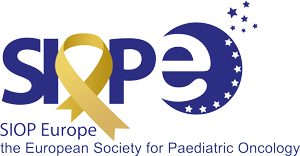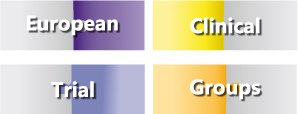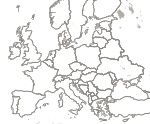Medulloblastoma
After the success of the SIOP-E HIT PNET4 study, recruiting patients with standard risk medulloblastoma (MB) in children older than 3-5 years, between 2001 and 2006 in 9 European countries, the working group now has the ambition to propose international prospective studies in all MB patients’ categories. The most important innovation is to now systematically and prospectively use integrated algorithms including biological as well as molecular genetic classifiers besides clinical, neuroradiological and histological information, to achieve optimal treatment stratification.
In children with ‘standard risk’ MB older than 3-5y at diagnosis, the SIOP-E PNET5 study is currently in the initiation phase across 16 European countries (PI: Stefan Rutkowski, Sponsor: University of Hamburg, Germany). Children with metastases, large postoperative residual tumour, or biologically ‘high risk’ MB (MYC or NMYC amplification, large cell or anaplastic histology) will not be included. SIOP-E PNET5 is planning a reduced radiotherapy and chemotherapy treatment for ‘favourable risk’ patients younger than 16y with WNT activated tumours (Co-coordinating investigator: François Doz, Institut Curie, Paris, France) and a randomized study about carboplatin radio-sensitization in all other eligible patients.
The infant/young children SIOP-E MB study project YCMB is well advanced. A randomized study about the administration of intra-ventricular methotrexate is planned in patients with desmoplastic MB and MB with extensive nodularity (PI: Stefan Rutkowski, University of Hamburg). In MB with non-desmoplastic/nodular histology (classic MB, large-cell MB, anaplastic MB), a double randomization is planned regarding the type of high dose chemotherapy and the use of maintenance treatment (Co-PI: Christelle Dufour, Gustave Roussy, Villejuif, France). Dose adapted craniospinal radiotherapy will only be planned in patients with initial metastases and in those with persisting localized disease.
Finally, in children older than 3-5y with ‘high risk’ MB, the current trial project is led by Simon Bailey (University of Newcastle, UK). The inclusion criteria are based on staging (metastatic disease, residual disease) and on high-risk biopathological features (large cell or anaplastic, MYC or MYCN amplification). The plan under discussion is to stratify according to the risk factors: high risk with initial good response to post-operative chemotherapy; very high risk biological subgroups and/or patients with a poor response to initial chemotherapy; and patients with WNT MB associated with ‘high risk’ features. According to these risk categories, it is planned to evaluate the role of hyper-fractionated radiotherapy (HART), high dose chemotherapy followed by conventional radiotherapy or new treatments.
Prospective molecular characterization of all MB samples will become more and more necessary to underpin our trials and define risk stratification groups: identification of WNT activated MB is planned routinely, it will be also necessary to identify SHH activated MB as well as non WNT/non-SHH MBs (expression/methylation groups 3/4 MB), alongside other prognostic biomarkers (e.g. MYC / MYCN amplification), as their prognostic and predictive relevance become established. New treatments need to be developed especially for very high risk patients (e.g. MYC amplified MB), even during front-line therapy.
CNS PNET and pinealoblastoma
An international working group on CNS-PNET has been initiated during the last ISPNO in Singapore (June 14) (Katja Von Hoff, University of Hamburg, coordinated this initiative for SIOP-E PNET WG). Global collaborative works are focusing on meta-analysis of international clinical data together with up-to-date biological and neuropathological classification. Future international collaboration for prospective clinical trials will be necessary in these rare subgroups of patients.
Biological samples
Molecular characterization will become more important to increase our knowledge on tumor biology and treatment optimization of medulloblastoma and CNS-PNET.
Therefore, collection and storage of high quality biological samples (tumor samples and other biological materials) is highly important. Standardized collection, characterization, storage and collaborative use of biological materials from study patients is organized within the PNET Biology working group as part of the above-mentioned trials and in collaborative research studies. The collection of constitutional DNA for somatic as well as for constitutional genetic studies are becoming increasingly important and have of course to be planned according to national rules. Further European collaboration on MB translational research is planned among reference labs involved in medulloblastoma and PNET.
The Medulloblastoma/PNET Biology working group is dedicating special expertise and contribution to the above mentioned tasks (current chair of the MB/PNET Biology working group: Steve Clifford, Newcastle, UK).
Quality of Survival
Given the improving survival rates, late effect studies are increasingly important. Close cooperation of the PNET working group with the Quality of Survival working group shall allow the conduct of late effect studies either within the specific trials or as co-studies.
The PNET group is currently chaired by: François Doz





 on Twitter
on Twitter on Facebook
on Facebook on LinkedIn
on LinkedIn on YouTube
on YouTube